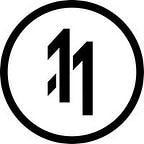An overview on Choice Architecture and its relevance to design.
This week, thanks to Nir Eyal’s Hooked, I discovered a paper on Choice Architecture by Richard Thaler, Cass Sunstein and John Balz.
According to the literature, Choice Architecture is the practice of creating an environment in which people make decisions — an analysis that suggests that all experience designers are choice architects as they have the responsibility of organizing the content and how users make decisions within them.
If you like this post please don’t forget to 👏👏👏👏👏👏👏👏👏.
Here are my main takeaways.
There are two types of systems which humans act on: Reflective and Automatic.
“The Reflective System is a deliberate and self-conscious thought process by which humans use logic and reasoning to help them make decisions.” The best example of this is that time when you paused to think before answering a question or making a move.
“The Automatic System is a rapid, intuitive process that is not associated with what we would traditionally consider thinking. This instinct, which could be called the gut instinct, trumps the reflective system.”
Here’s an excerpt from the paper, exemplifying the automatic system:
“At one point in the semester, Thaler pointed out this internal conflict to the class, as one embarrassed student was pulling on the door handle while trying to escape the classroom. Thereafter, as a student got up to leave, the rest of the class would eagerly wait to see whether the student would push or pull. Amazingly, most still pulled! Their automatic system triumphed; the signal emitted by that big wooden handle simply could not be screened out.”
Stimuli Response Compatibility is the technical name for a call to action.
Stimulus response compatibility is stimulus received by the brain must correspond to the action desired by the individual.
For example, flat plates on a door suggest push and large handles suggest pull — don’t put large handles on a door and expect people to push.
Default options help a users desired flow & can even help us design conscious systems
“The default option is critical to design elements as it acts as the path of least resistance and can therefore result in behavior prolonged behavior without a user registering it.” An example of which is the following:
Smart societies have moved to double-sided printing as the default option such as the city of Tulsa, Oklahoma whom estimate that they will save more than $41,000 a year with double sided printing.
Required decisions can help us drive our users in directions
“In Illinois when drivers go to get their license renewed and a new photograph taken they are required to answer the questions, “do you wish to be an organ donor?” before they can get their license. This policy has produced a 60 percent sign up rate compared to the national average of 38%”
Design should guide users along their journey, regardless of if they are doing well or not
“Well-designed systems tell people when they are doing well and when they are making mistakes.”
Consider a simple task such as painting a white ceiling white. How do you know which parts have been painted or are wet and which parts are yet to be covered? A designer solved this problem by creating a pink paint that turns white when it dries.
Design should accommodate for human error & should ideally remove it all together.
“Humans make mistakes. A well-designed system expects its users to err and is as forgiving as possible”
One study found that human error caused 82% of critical anesthesia related incidents with the most common error being that the hose for one drug was hooked up to the wrong delivery port, so the patients received the wrong drug. A designer solved this problem by redesigning the equipment so that the gas nozzles and connectors were different for each drug. It became physically impossible to make this previously frequent mistake.
All thoughts welcome,
Oscar
If you are interested in learning more about Oscar’s pursuit, please click here.
